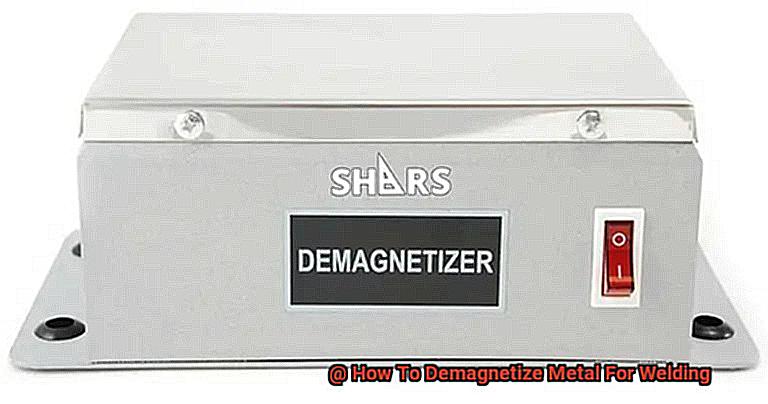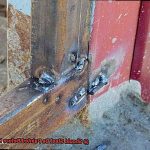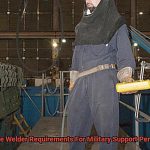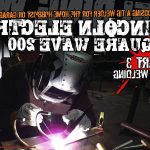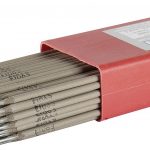Are you tired of struggling with welding certain metals due to their pesky magnetic properties?
Do you find yourself constantly frustrated by poor welds or difficulty navigating magnetic interference during the welding process? Fear not, my fellow welder.
The solution lies in demagnetizing the metal prior to the welding process. Demagnetizing metal is the process of removing or reducing the magnetic field present in the metal.
This process is essential for welding certain metals such as stainless steel, aluminum, and nickel alloys which all have magnetic properties. If not properly demagnetized, these metals will inevitably cause magnetic interference and disrupt the welding process.
Luckily, there are various methods in which to demagnetize metal for welding. You can use AC or DC current, hammering the metal or even specialized demagnetizing equipment.
Depending on the type of metal and your desired outcome, certain methods may be more effective than others. So if you’re eager to improve your welding skills and produce better-quality welds, demagnetizing the metal prior to welding is a crucial step.
Trust me, it will save you time and frustration in the long run. In this article, we’ll explore all of these methods of demagnetizing metal and provide you with expert advice and tips that will help you achieve perfect welds every time.
Let’s get started.
What is Demagnetizing Metal for Welding?
Contents
If you’ve ever attempted to weld magnetized metal, you know the frustration of arc deflection, poor weld quality, and even weld failure.
That’s why it’s essential to demagnetize metal before welding. Demagnetizing metal for welding is the process of removing any residual magnetism in the metal before welding.
Magnetism can occur in metals due to several reasons, including the residual magnetism left over from manufacturing, exposure to strong magnetic fields, or even contact with magnetic materials. As a result, it’s crucial to demagnetize the metal before welding to prevent any unwanted effects.
The demagnetization process involves using an alternating current (AC) or direct current (DC) demagnetizer. An AC demagnetizer works by passing an AC current through the workpiece in a specific pattern, reducing magnetism.
Alternatively, DC demagnetizers use a magnetic field generated by an electric coil to reduce magnetism. Other methods for demagnetizing metal include striking it with a hammer or mallet and using a degaussing coil that generates a magnetic field that counteracts the magnetism in the metal.
Heating the metal above its Curie temperature is also effective but may not be practical for all types of metals and may cause distortion or warping in some cases. In conclusion, demagnetizing metal for welding is a critical step in ensuring high-quality and long-lasting welds.
The process removes residual magnetism that can cause issues such as arc deflection, poor weld quality, and even weld failure.
Why is it Important to Demagnetize Metal Before Welding?
Before you start, take a crucial step that is often overlooked – demagnetize the metal.
You might wonder why this is important, but trust us, magnetized metal can cause significant issues during welding. Magnetized metal can wreak havoc on your weld penetration and make it difficult to control the weld pool.
If the weld penetration is poor, the joint will lack strength and integrity, leading to failure. Moreover, magnetic fields can cause various welding defects like porosity, cracking, and lack of fusion.
These defects can compromise the quality of the welded joint and may ultimately lead to catastrophic failure. But wait, there’s more.
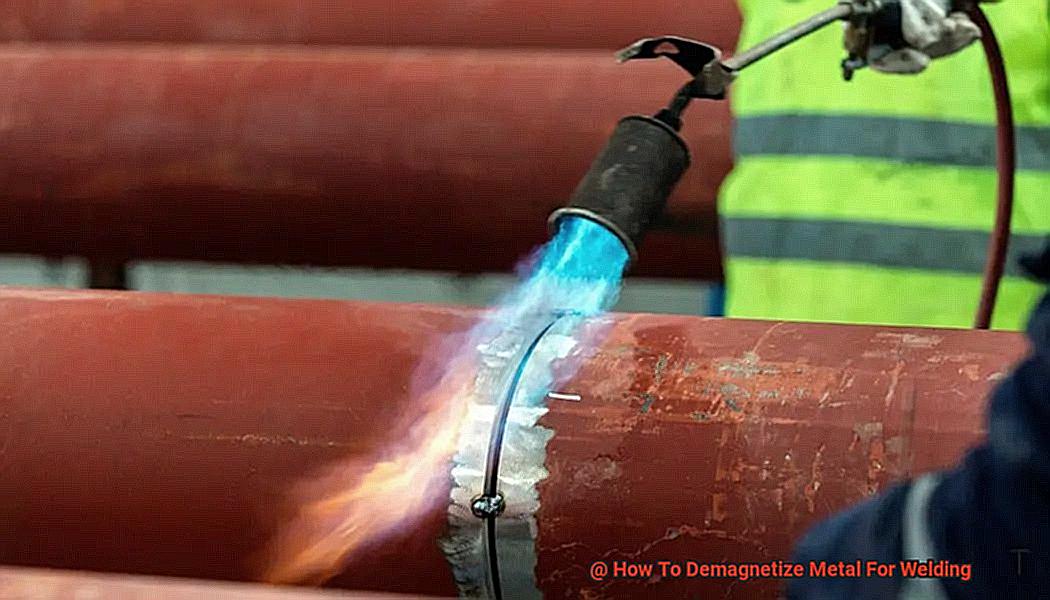
Magnetized metal can also attract debris and impurities from the welding environment, contaminating the weld and weakening its structure. This problem becomes particularly acute when welding materials that are susceptible to contamination like aluminum or stainless steel.
Therefore, demagnetizing the metal before welding is crucial for ensuring a high-quality weld that meets industry standards and requirements. It helps ensure proper penetration and control of the weld pool, reduces the risk of defects and contamination, and ultimately improves the overall quality of the welded joint.
In conclusion, demagnetizing metal before welding may seem like an extra step, but it’s a vital one that should not be overlooked. Taking this necessary step ensures a stronger, more durable welded joint free from defects.
By doing so, you contribute to a safer and more reliable end-product.
AC Demagnetizer Method
And when it comes to demagnetization methods, the AC Demagnetizer method is a popular choice.
But what exactly is it, and how does it work? The AC Demagnetizer method involves using an alternating current to create a magnetic field that gradually decreases residual magnetism in the metal.
This method requires an AC demagnetizer machine, which produces the necessary current passed through a coil wrapped around the metal to be demagnetized. However, it’s crucial to note that not all metals can withstand the high temperature generated during the demagnetization process.
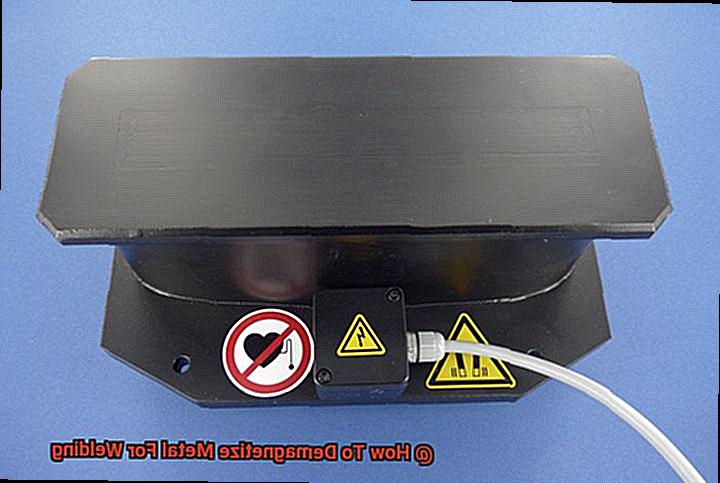
Therefore, following manufacturer’s instructions for specific metals is essential. To ensure safety when using this method, protective gear such as gloves and eye protection should be worn.
Proper grounding of both the machine and workpiece is also vital to prevent electrical shocks. In summary, the AC Demagnetizer method is an effective way to remove residual magnetism in metal before welding.
By generating a magnetic field in the opposite direction of the magnetization of the metal, it gradually decreases until no longer present. But why go through this extra step?
Think of it like putting on a seatbelt before driving – it may take a few extra seconds, but it’s essential for safety and durability.
Hammer/Mallet Method
Before welding any metal, it’s crucial to ensure that it’s completely demagnetized.
Residual magnetism in the metal can cause issues during the welding process, such as arc blow or poor weld quality. If you’re looking for an easy and cost-effective solution to demagnetize your metal, the Hammer/Mallet Method is definitely worth considering.
This method involves striking the metal surface with a hammer or mallet in a specific pattern. By doing so, the repeated impact of the hammer or mallet disorganizes the magnetic domains within the metal and reduces or eliminates the magnetic field.
It’s as simple as that. To use this method, hold the metal object in one hand and strike it with a hammer or mallet in a consistent pattern.
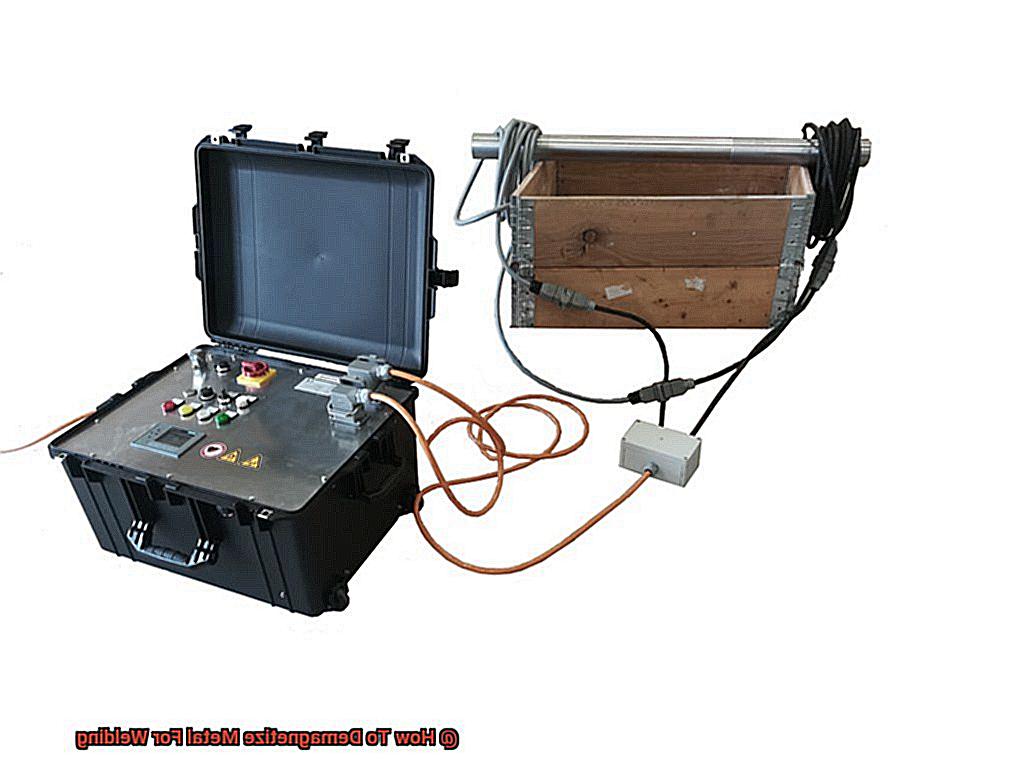
Be sure to cover the entire surface of the metal object, striking it at different angles to ensure all areas are covered. Although the strikes should be firm, avoid using excessive force.
However, it may not be as effective for larger or thicker pieces of metal where striking them with enough force can be challenging.
Degaussing Coil Method
Look no further than the degaussing coil method.
This tried and true technique uses an electric current and a specially designed coil to generate a magnetic field that can neutralize any lingering magnetism. To get started, you’ll need a degaussing coil which can be easily found at welding supply stores or equipment rental companies.
The coil is made of copper wire wound into a spiral shape, which is then wrapped around the metal you want to demagnetize. Once the degaussing coil is in position, it’s time to supply it with an electric current.
This can be achieved through a power supply unit or by connecting the coil to an electrical outlet. As the current flows through the coil, a magnetic field will form around the metal, effectively neutralizing any residual magnetism.
It’s important to note that while the degaussing coil method is effective for most metals, high-carbon steel or hardened metals may not respond as well. In these cases, alternative demagnetization techniques may be necessary.
Heat Method
This tried-and-true technique involves heating the metal to a specific temperature and gradually allowing it to cool, thereby altering its magnetic properties and eliminating magnetism. To get started with the heat method, you’ll need a reliable heat source like a furnace or oven.
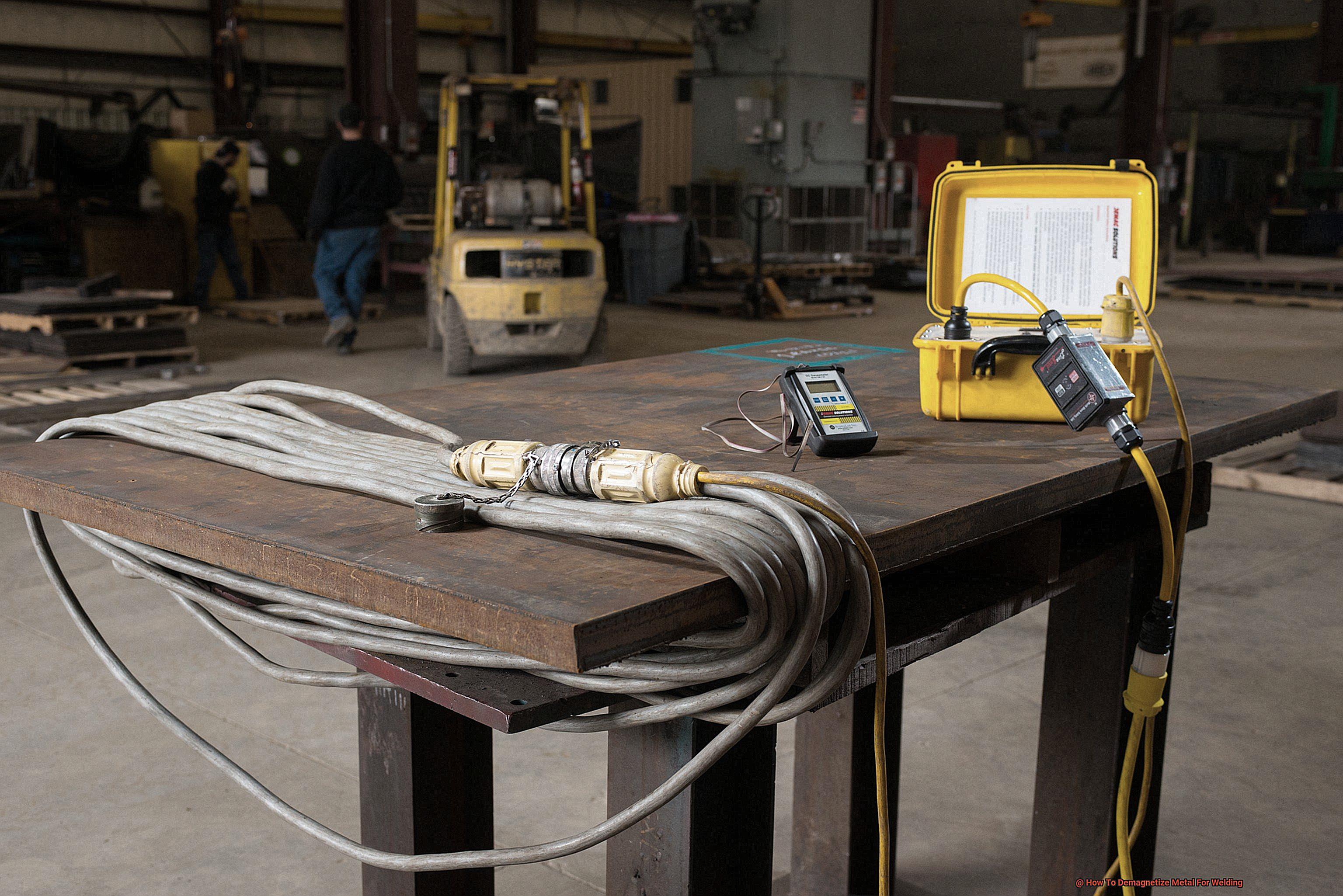
Next, place your metal inside and heat it to the specific temperature required for its type. For instance, if you’re working with steel, you may need to reach a temperature of around 1000 degrees Celsius.
Once your metal has reached the desired temperature, it’s time to let it cool down gradually. You can achieve this by turning off the heat source and letting it cool naturally or by removing it from the heat source and placing it in a controlled cooling environment like a furnace with controlled cooling.
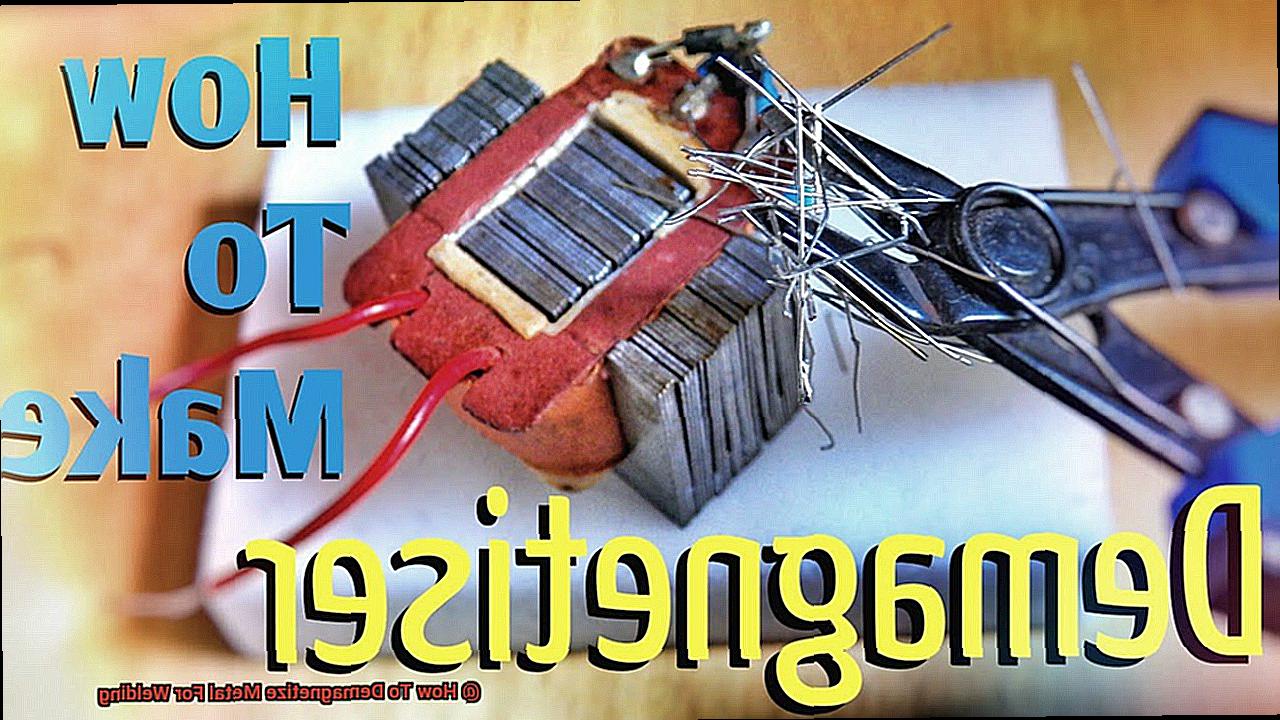
It’s crucial to note that while the heat method is highly effective for most metals, some complex structures or high levels of magnetism may not respond well to this treatment.
Additionally, overheating can lead to warping or distortion of the metal and compromise its structural integrity.
So, using the heat method is an excellent way to demagnetize metal for welding. It’s simple yet effective – just heat your metal up and allow it to cool gradually.
ov1te0i0wLE” >
Conclusion
In conclusion, don’t let magnetized metal be the villain in your welding story.
It’s a crucial step that shouldn’t be overlooked. Welding with magnetized metal can cause significant issues, such as arc deflection, poor weld quality, and even weld failure.
Plus, it can attract debris and impurities from the welding environment, contaminating the weld and weakening its structure. Luckily, there are various methods available to demagnetize metal for welding.
You can use AC or DC current demagnetizers, hammer the metal with a mallet, use a degaussing coil or heat the metal above its Curie temperature. Each method has its advantages and disadvantages depending on the type of metal and desired outcome.
Demagnetizing metal before welding ensures proper penetration and control of the weld pool while reducing the risk of defects and contamination. Ultimately, it improves the overall quality of the welded joint and contributes to a safer and more reliable end-product.
If you’re eager to improve your welding skills and produce better-quality welds, demagnetizing the metal prior to welding is an important step that will save you time and frustration in the long run.
